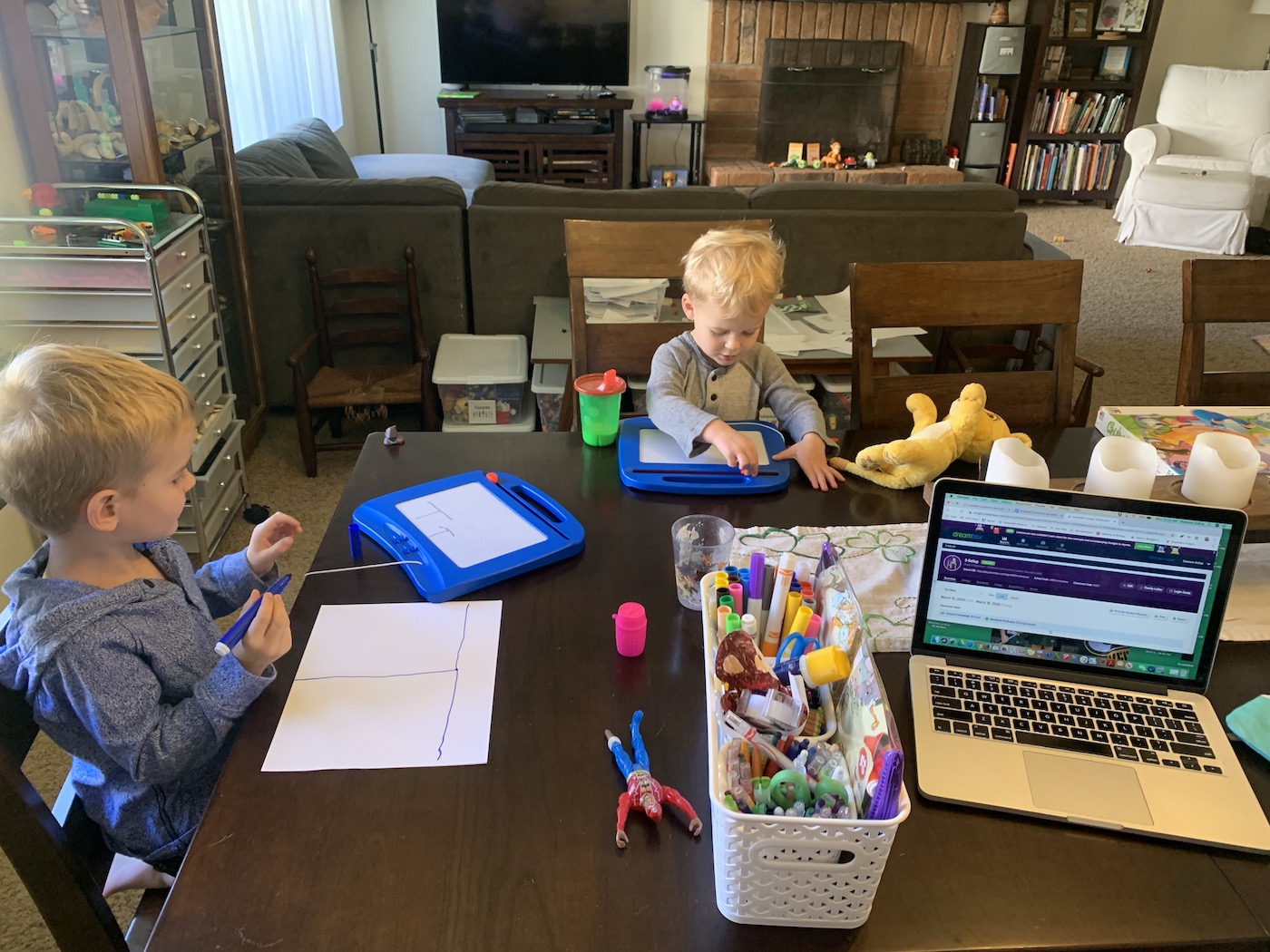Remote Learning in Montecito

On Friday, March 13, it was announced that all 20 school districts within Santa Barbara County would close indefinitely in response to the Covid-19 pandemic, leaving over 67,000 students – and their parents – left to begin a homeschooling program. Administrators and teachers from both of Montecito’s public schools have been working around the clock to adapt school curriculum for home use, in an attempt to bring a sense of normalcy to their students during this unprecedented time. Both Cold Spring School and Montecito Union School held one week of remote learning before their scheduled spring break last week; this week, on Wednesday, both schools will roll out a more formal remote learning program.
“Our staff has been absolutely amazing,” said CSS superintendent Dr. Amy Alzina. “They rolled up their sleeves immediately and started getting to work building these remote curriculums.” The remote learning being rolled out this week at CSS utilizes programs such as Google Classroom and Zoom, and Dr. Alzina said the school’s primary focus is on English language arts (reading, writing, grammar, phonics), as well as math, with a secondary focus on social studies and science. Each student is provided a MacBook, as well as a set of headphones with a microphone, and earlier this week the school held a sort of “Back to School” night for parents via Zoom, to go over the daily schedule as well as parental expectations and limitations. “Everyone has a roll and responsibility, and we will get through this together,” Dr. Alzina said.

The 169 students at Cold Spring School will start their remote learning day with an all school Zoom meeting at 8:25 am, mimicking the daily blacktop meetings they used to have in person for the Pledge of Allegiance, birthday roll call, and announcements. “I think it’s important that they see me every morning, to give them a familiar way to start off their day,” she said. Students will then attend a Zoom meeting with their teacher, who will go over the daily schedule, assignments, and lesson plans. The bulk of the lessons, which are a combination of screen lessons and pen/paper, are done in the morning hours, in order to give parents flexibility in the afternoon. “We are cognizant that not every student is going to log back in after lunch, depending on what their parents need to accomplish that day,” Dr. Alzina. After lunch, lessons include music, PE, STEAM, and art. “We have teachers that are giving violin lessons to students remotely, or drama lessons for our sixth grade play,” said Dr. Alzina, adding that teachers are able to work from home or from their classroom on campus, and are working with a consultant to sharpen their technological skills. “It’s basically like we’ve started a new school,” she said.
At Montecito Union, “MUS At Home 2.0” is also launching this week, following a week-and-a-half spring break which teachers and administrators spent building remote curriculums. “We’re utilizing a variety of different tools, from high tech to low tech,” said MUS superintendent Dr. Anthony Ranii, adding that the school is also using Google Classroom and Google Docs, Zoom, and a program called Seesaw which allows kids to upload videos to their teachers, to show their progress on assignments. All teachers and educational staff at MUS are working from home to maintain social distancing, including Dr. Ranii, who spoke to us from his home office earlier this week. “All of our teachers are also learning how to work and juggle their own families, and they’ve had great attitudes,” Dr. Ranii said.

Dr. Ranii says the goal of MUS At Home is to provide learning experiences and keep the learning from the school year going; it is not about a maintaining an 8:30 am to 3:30 pm schedule like a normal school day. The 364 MUS students will start at 9 am with a class meeting, followed by a lesson at 9:30, and a short recess at 10 am to cut the screen time. There will be more lessons at 10:30 and 11 am, followed by lunch and a less structured afternoon. “We want them to read for 45 minutes following lunch, or get outside and do something fun,” Dr. Ranii said. Because school is technically closed, there is no attendance requirements, and no grades will be given for home assignments. “We understand that the parents and families are going to do what they are going to do, but we need to be flexible,” Dr. Ranii said. The school provided each student the option to take home a device, and were ready to provide wireless hotspots if a student or family did not have access to WIFI.

Special needs students are still able to have counseling sessions online with an array of specialists and therapists. “We’re a full inclusion school, and we’ve got some students with significant disabilities,” Dr. Ranii said, adding that the school’s specialists have been working to modify their curriculum for special needs students.
Those students at MUS who receive free and reduced school lunches are still being provided that service, via remote lunch service at a number of campuses in Santa Barbara. “We’re very thankful to Santa Barbara Unified School District for being our partner in this,” Dr. Ranii said, adding that SBUSD is the provider of hot lunches at the school during the typical school year.
Dr. Ranii and Dr. Alzina both report that although school is canceled officially until the end of April, they are preparing for a scenario in which school will not resume until after summer. They are discussing how to best navigate graduations, end of school year plays, dances, and more. “We’re hopeful we can come back to campus in May, but if that can’t happen, we are having some tough conversations on how to navigate this new normal,” Dr. Ranii said.





